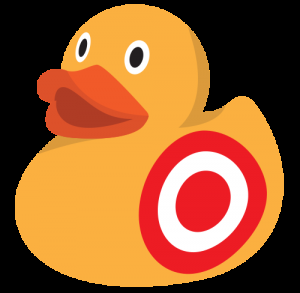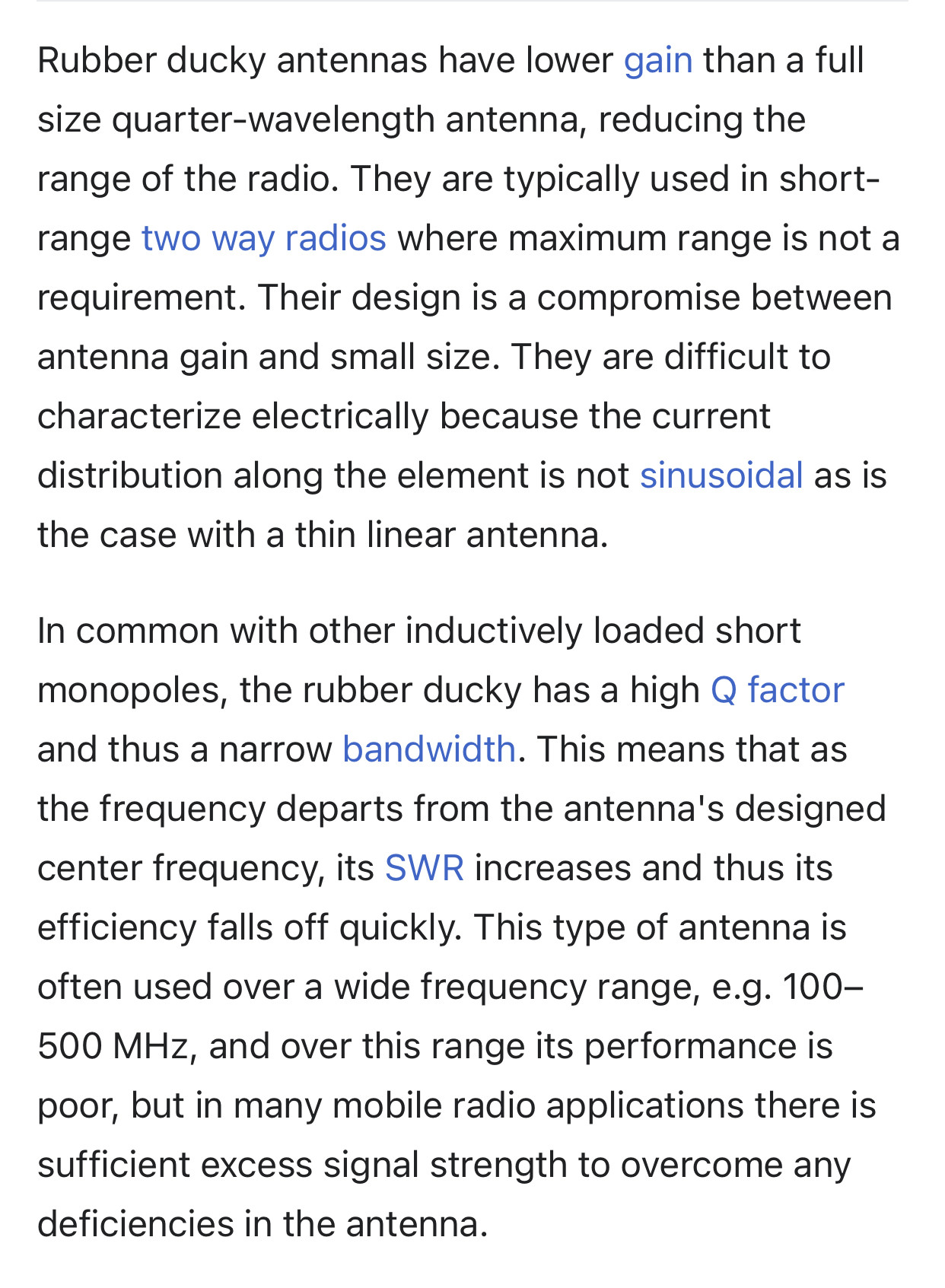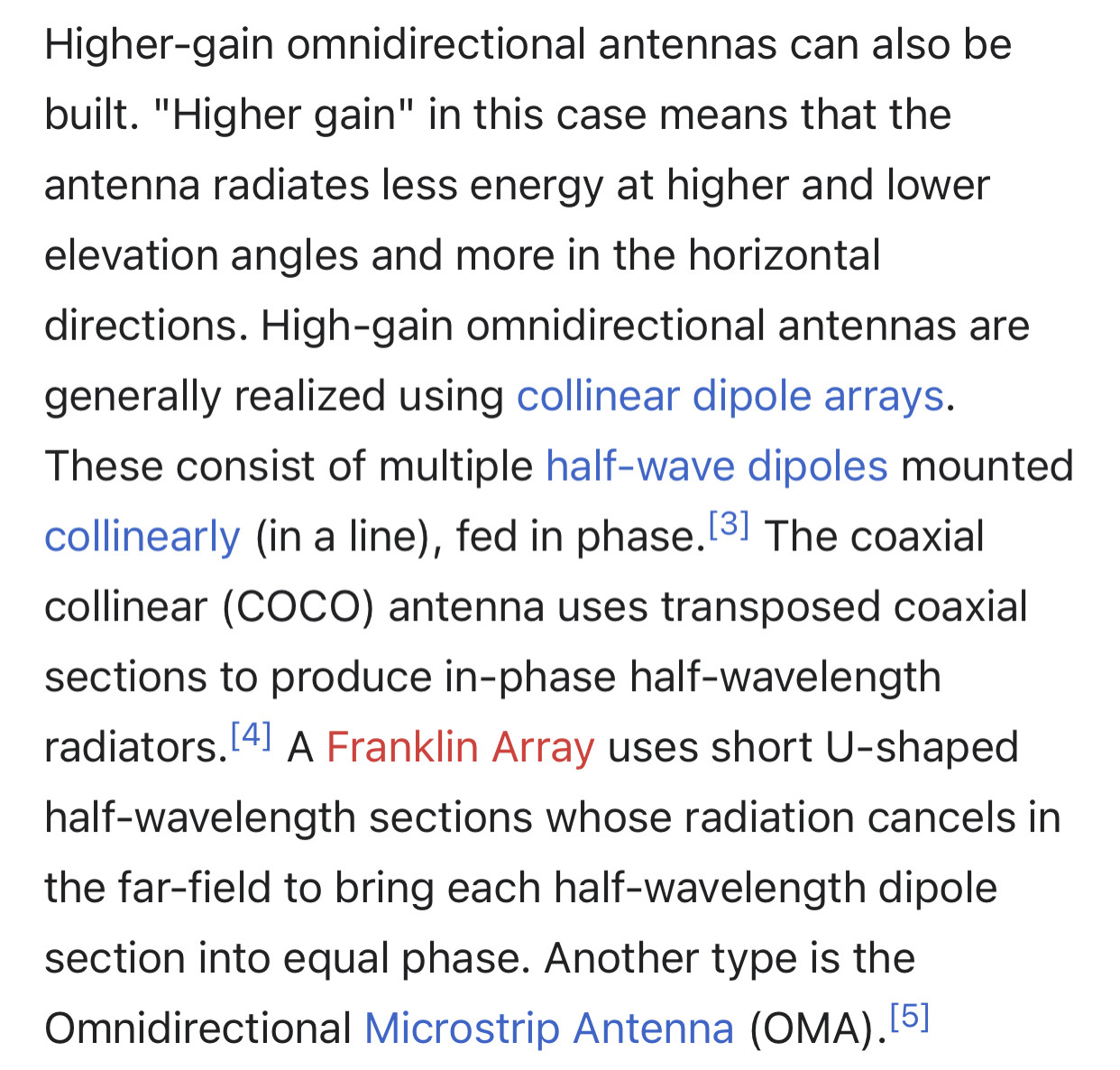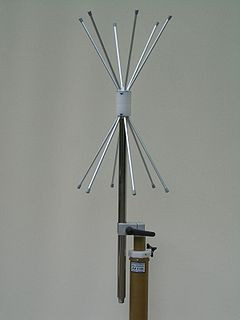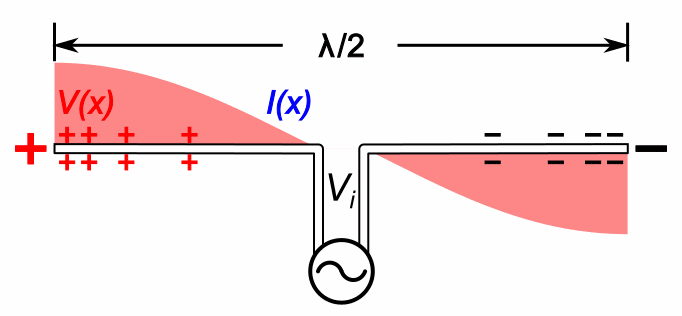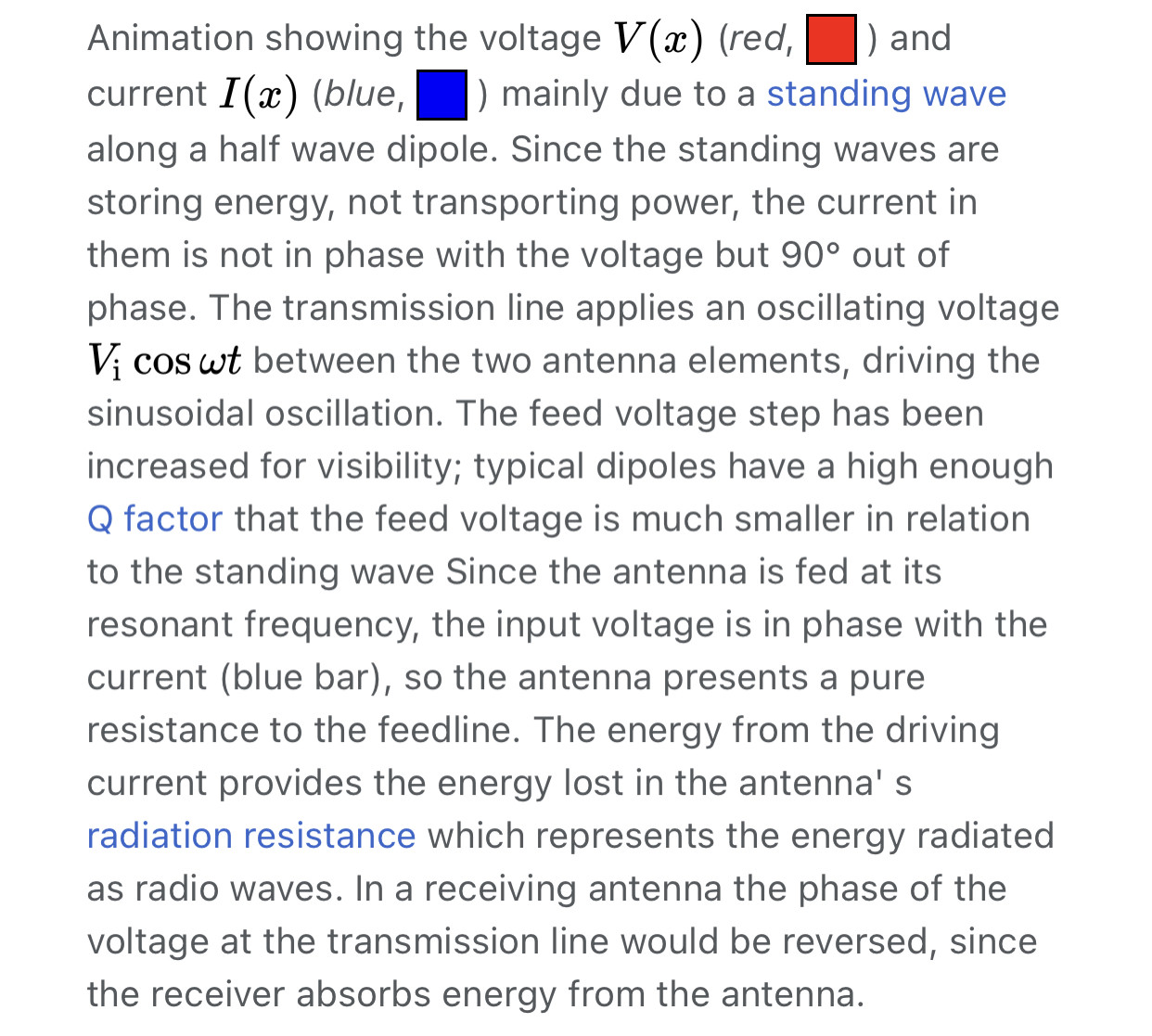The government advised the people to stay at home and save lives?
Omni directional antennas provide a 360o donut shaped radiation pattern to provide the widest possible signal coverage in indoor and outdoor wireless applications. An analogy for the radiation pattern would be how an un-shaded incandescent light bulb illuminates a room.
late 18th century: from French, from Latin incandescent- ‘glowing’, from the verb incandescere, from in- (expressing intensive force) + candescere ‘become white’ (from candidus ‘white’).
The rubber ducky antenna (or rubber duck aerial) is an electrically short monopole antenna that functions somewhat like a base-loaded whip antenna. It consists of a springy wire in the shape of a narrow helix, sealed in a rubber or plastic jacket to protect the antenna. Rubber ducky antenna is a form of normal-mode helical antenna.
Two rumors link the naming of the antenna with the Kennedy family.[1] In the early 1960s the rubber ducky became the antenna of choice for personal walkie-talkie transceivers used by police and security services, including the U.S. Secret Service, which guards the President of the United States. According to one rumor, the young Caroline Kennedy, daughter of President John F. Kennedy, named the flexible device when she pointed at one on an agent's transceiver and said, "rubber ducky". On the other hand, Dr. Thomas A. Clark, a senior scientist with NASA, claims to have named it after listening to one of Vaughn Meader's comedies about the Kennedy family.
An alternative name is based on the short stub format: the "stubby antenna".
We are given the voltage and the power output of a simple circuit containing a lightbulb, so we can use the equation P=IV to find the current I that flows through the lightbulb. 19.51P=IVI=PV=60 W120 V=0.50 A. Thus, a half ampere flows through the lightbulb when 120 V is applied across it.
An LED bulb produces light by passing the electric current through a semiconducting material—the diode—which then emits photons (light) through the principle of electroluminescence
diode
/ˈdʌɪəʊd/
ELECTRONICS
noun: diode; plural noun: diodes
a semiconductor device with two terminals, typically allowing the flow of current in one direction only.
a thermionic valve having two electrodes (an anode and a cathode).
Origin
early 20th century: from di-1 ‘two’ + a shortened form of electrode.
Quantum dot-based light emitting diodes (QDLEDs) are a new form of light emitting technology based on nanoparticle, and their structures are similar to the OLED technology. Although, in this technology, a layer of quantum dots is placed between electron and hole-transporting layers, like sandwiched structure.
In this Letter, we demonstrate a 1300-fold enhancement in the spontaneous emission lifetime (Purcell enhancement) of PbS QDs integrated into the cavity region of a plasmonic nanoantenna.
https://pubs.acs.org/doi/10.1021/acsphotonics.6b00357#
The proposed plasmonic nanoantenna, based on spherical active coated nano particle (CNP), operates at 600 THz resonance frequency. The plasmonic induced polarization rotation in spherical active CNP model is observable in case when this model is placed in the vicinity of a size optimized resonating dielectric sphere.



